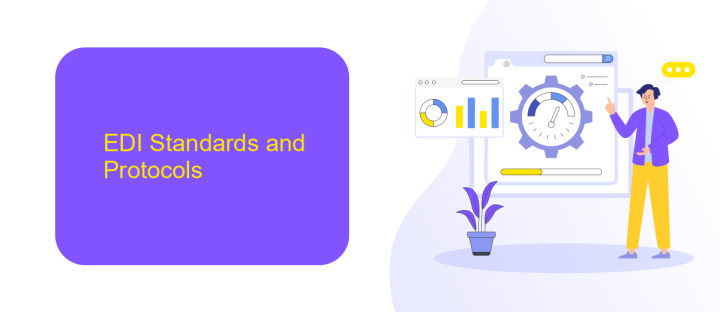Data Integration EDI
Data Integration Electronic Data Interchange (EDI) is a critical component for modern businesses aiming to streamline operations and enhance communication. By automating the exchange of data between different systems and partners, EDI reduces errors, increases efficiency, and ensures real-time data accuracy. This article explores the fundamentals of EDI, its benefits, and how it can transform your business operations.
EDI Integration Overview
Electronic Data Interchange (EDI) integration is a critical component for businesses looking to streamline their operations and improve data accuracy. By leveraging EDI, companies can automate the exchange of business documents such as purchase orders, invoices, and shipping notices, reducing the need for manual data entry and minimizing errors.
- Automated data exchange: Speeds up transaction processing and reduces manual intervention.
- Improved data accuracy: Minimizes errors associated with manual data entry.
- Cost savings: Reduces administrative costs and improves operational efficiency.
- Enhanced partner relationships: Facilitates smoother communication and collaboration with trading partners.
- Regulatory compliance: Ensures adherence to industry standards and legal requirements.
Implementing EDI integration can significantly enhance a company's supply chain management and overall business performance. By adopting this technology, businesses can achieve greater efficiency, accuracy, and cost-effectiveness, thereby gaining a competitive edge in the market.
EDI Standards and Protocols

EDI standards and protocols are essential for ensuring seamless data exchange between different business systems. The most widely recognized EDI standards include ANSI X12, EDIFACT, and TRADACOMS. ANSI X12 is primarily used in North America, while EDIFACT is the international standard. TRADACOMS is mainly used in the UK retail sector. These standards define the format and structure of electronic documents, ensuring that data is accurately interpreted and processed by the receiving system. Protocols such as AS2, FTP, and SFTP are commonly used for the secure transmission of EDI messages over the internet.
Implementing EDI can be complex, but services like ApiX-Drive simplify the process by providing tools for integrating various business applications. ApiX-Drive supports multiple EDI standards and protocols, allowing businesses to automate data exchange without extensive technical knowledge. By using such services, companies can focus on their core operations while ensuring reliable and efficient EDI communication. This not only reduces the risk of errors but also enhances overall operational efficiency.
Challenges and Benefits of EDI Integration

Electronic Data Interchange (EDI) integration presents both challenges and benefits for businesses. Implementing EDI systems requires significant initial investment in technology and training, which can be a barrier for smaller companies. Additionally, ensuring data accuracy and security during transmission can be complex, necessitating robust protocols and regular monitoring.
1. Improved efficiency: EDI automates data exchange, reducing manual entry errors and speeding up transactions.
2. Cost savings: By minimizing paperwork and streamlining processes, EDI reduces operational costs.
3. Enhanced relationships: Faster, more accurate data exchange improves collaboration with partners and suppliers.
4. Scalability: EDI systems can grow with the business, accommodating increasing data volumes and complexity.
5. Compliance: EDI helps meet industry standards and regulatory requirements, reducing the risk of non-compliance penalties.
Despite the initial hurdles, the long-term advantages of EDI integration make it a valuable investment. Businesses can achieve greater operational efficiency, cost savings, and enhanced partner relationships. As technology evolves, the barriers to EDI adoption are likely to decrease, making it accessible to a broader range of companies.
EDI Integration Tools and Technologies

EDI integration tools and technologies are essential for businesses aiming to streamline their data exchange processes. These tools facilitate the seamless transfer of electronic data between different systems, ensuring that information flows smoothly and accurately. By leveraging EDI, companies can significantly reduce manual data entry, minimize errors, and improve overall operational efficiency.
Various EDI integration tools are available, each offering unique features and capabilities. These tools can be cloud-based or on-premises solutions, depending on the specific needs and infrastructure of the organization. They often come with pre-built connectors and adapters to integrate with popular ERP, CRM, and other enterprise systems.
- Mapping and translation tools
- Communication protocols (AS2, FTP, SFTP)
- Data validation and error handling
- Security and compliance features
- Monitoring and reporting tools
Choosing the right EDI integration tool involves evaluating the specific requirements of your business, such as the volume of transactions, the types of documents exchanged, and the level of security needed. By selecting the appropriate tools and technologies, organizations can enhance their data integration capabilities and achieve greater operational efficiency.


Best Practices for Successful EDI Integration
To ensure successful EDI integration, it is crucial to thoroughly plan and document all processes involved. Begin by identifying and mapping out the specific data formats, protocols, and standards required by your trading partners. Establish a clear understanding of your business needs and objectives, and choose a robust EDI solution that aligns with these requirements. Regularly update and test your systems to ensure compatibility and compliance with industry standards.
Utilizing integration platforms like ApiX-Drive can significantly streamline the EDI integration process. ApiX-Drive offers a user-friendly interface and powerful automation tools that simplify the connection between various applications and trading partners. By leveraging such services, you can reduce manual data entry, minimize errors, and enhance overall operational efficiency. Additionally, ensure continuous monitoring and support to swiftly address any issues that may arise, ensuring seamless and uninterrupted data exchange.
FAQ
What is EDI (Electronic Data Interchange)?
What are the benefits of using EDI for data integration?
How does EDI differ from traditional data exchange methods?
What types of documents can be exchanged using EDI?
How can I implement EDI integration in my business?
Strive to take your business to the next level, achieve your goals faster and more efficiently? Apix-Drive is your reliable assistant for these tasks. An online service and application connector will help you automate key business processes and get rid of the routine. You and your employees will free up time for important core tasks. Try Apix-Drive features for free to see the effectiveness of the online connector for yourself.

